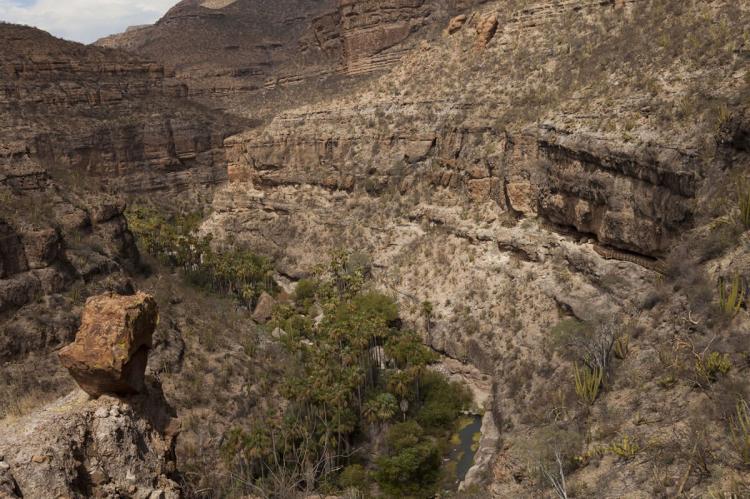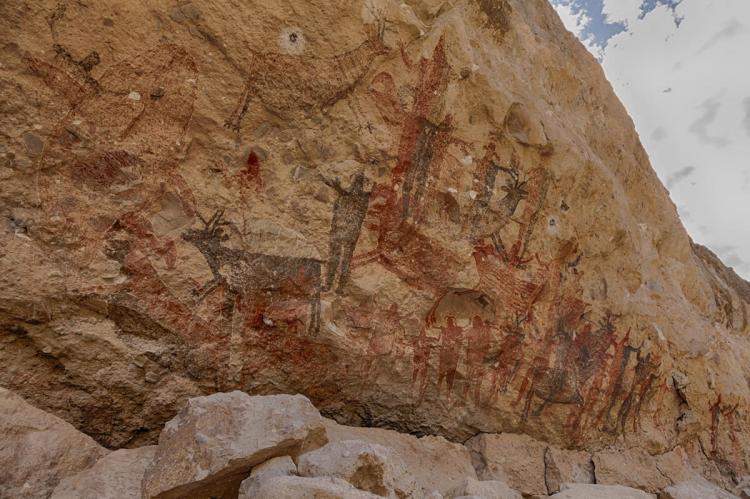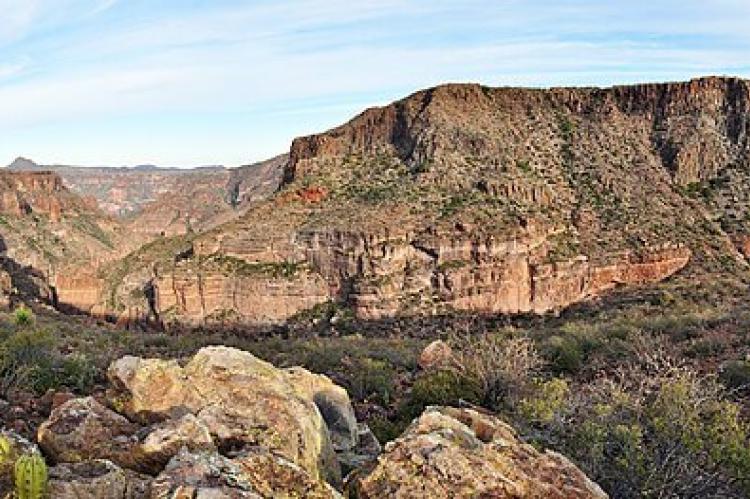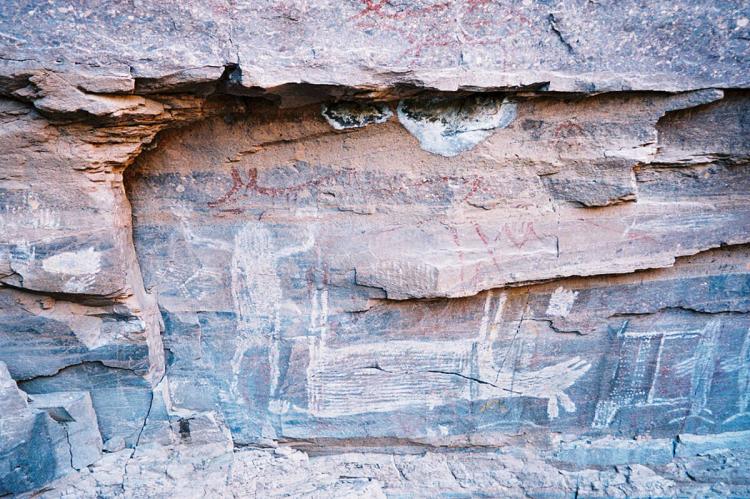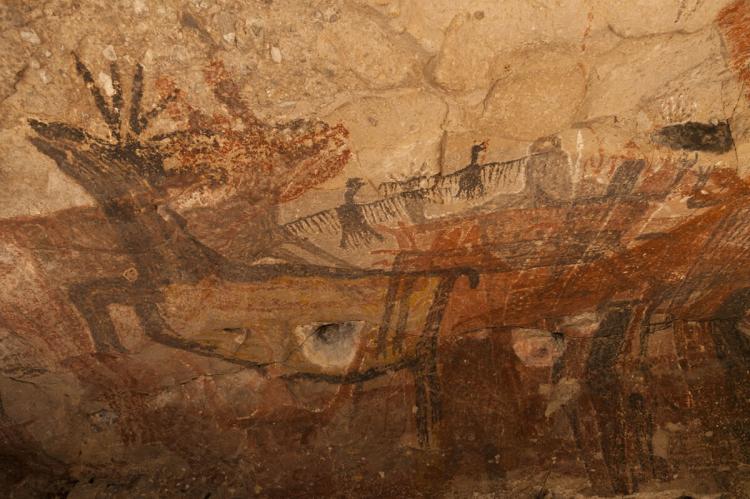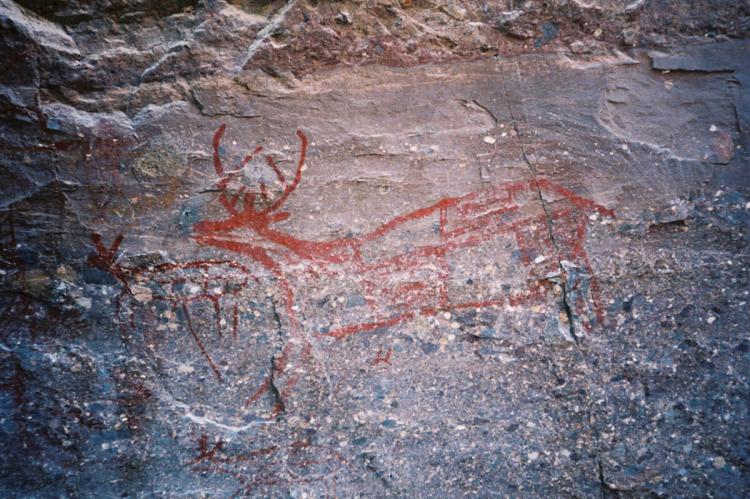Rock Paintings of Sierra de San Francisco (Mexico)
The Rock Paintings of Sierra de San Francisco, nestled within the rugged landscape of the Sierra de San Francisco in Baja California, Mexico, boasts an extraordinary collection of prehistoric pictographs, offering a window into the lives of the ancient people who inhabited this region centuries ago.
Rock Paintings of Sierra de San Francisco
The Rock Paintings of Sierra de San Francisco, nestled within the rugged landscapes of Baja California Sur in Mexico, stand as a testament to the rich cultural heritage and artistic expressions of ancient inhabitants. Designated as a UNESCO World Heritage Site in 1993, this archaeological treasure encompasses a collection of prehistoric rock art that has captivated scholars, explorers, and art enthusiasts alike.
The Sierra de San Francisco, part of the Peninsular Ranges system, is located in the central part of the Baja California Peninsula. It is a harsh and unforgiving environment. Characterized by arid plains, towering cliffs, and seasonally-flowing rivers, this region has been a haven for humans for over 10,000 years. The various rock shelters and caves scattered throughout the mountains provided these early inhabitants protection from the elements and a canvas for their artistic expression.
The rock paintings are attributed to the indigenous Cochimí people, who inhabited the region for thousands of years. Created between 100 B.C. and A.D. 1300, these artworks provide invaluable insights into ancient societies' spiritual and cultural practices in the Baja California Sur region.
The rock paintings of Sierra de San Francisco are a remarkable display of artistic skill and imagination. Created using natural pigments such as red ochre, black manganese, and yellow limonite, the paintings depict a wide range of subjects, including:
-
Humans: Figures ranging from hunters and dancers to pregnant women and shamans are depicted in various postures and activities, offering glimpses into these ancient communities' social structures and daily lives.
-
Animals: The intricate portrayals of deer, bighorn sheep, rabbits, and other animals showcase the detailed knowledge of the local fauna possessed by the early inhabitants.
-
Geometric designs: Abstract patterns and symbols, often interpreted as representations of spiritual beliefs, add a layer of mystery and intrigue to the paintings.
-
Celestial bodies: The inclusion of stars, planets, and the sun suggests an understanding of astronomy and a deep connection with the cosmos.
The paintings exhibit various styles and techniques, reflecting the ancient inhabitants' evolving cultural and artistic practices. From elaborate human figures to geometric patterns and depictions of flora and fauna, the rock art demonstrates a rich visual language that likely held cultural, spiritual, and communicative significance within the Cochimí community.
The delicate nature of the rock paintings has posed significant challenges to their preservation. Weathering, erosion, and human impact have threatened these ancient masterpieces. Conservation efforts, including protective measures and controlled visitor access, have been implemented to ensure the continued existence of this cultural heritage.
The Rock Paintings of Sierra de San Francisco were inscribed on the UNESCO World Heritage List due to their exceptional cultural value. The site represents a unique and irreplaceable contribution to the understanding of ancient civilizations in the Americas, highlighting the sophisticated artistic expressions of the Cochimí people. Conservation efforts are underway to protect these irreplaceable treasures for future generations.
While access to the actual rock art is restricted to protect its integrity, guided tours and interpretative centers in the surrounding areas provide visitors with educational experiences. These initiatives aim to share the cultural significance of the site while ensuring the preservation of this extraordinary legacy for future generations.
